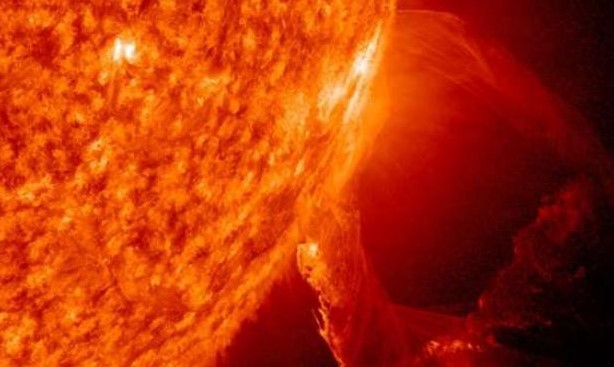லபடில்லா
What will be ours Word After I die? Scientists have made predictions about how our solar system will end and when it will happen. But fortunately or unfortunately Humans will not be See final action.
By 20 minutes
As collected Scientific warningUntil now, astronomers thought it would become a planetary nebula. Glowing bubble of gas and dustIt should be even larger until the evidence suggests it.
An international team of astronomers actually discovered a planetary nebula in 2018 Mostly solar corpse type.
10,000 million years from now
The sun is approx 4.6 billion years, Calculated based on the age of other objects in the solar system that formed at the same time. Based on the observations of other stars, astronomers predict that it will reach the end of its life in another 10 billion years.
There are other things that happen along the way, of course. In some 5 billion years, The sun turns red. The center of the star will shrink, but its outer layers will expand into orbit around Mars, sinking our planet into action. If it is still there.
One thing is for sure: we will go into it. In fact, mankind is only about a billion years old if they do not find a way out of the planet. This is because the brightness of the sun increases approx 10% for every billion years.
This is how life on earth ends … but then what?
It may not seem big, but the increase in that brightness will kill life on Earth. Our oceans evaporate Also the surface water is too hot to form.
Coming after the red giant is hard to knit. Several previous studies have found that it should be developed A bright planetary nebulaThe initial star must have been twice as large as the Sun.
However, the 2018 study used computer modeling to determine it, Like 90% of other stars, Our sun will shrink from a red giant to a white dwarf and then end up as a planetary nebula.
“When a star dies, it emits gas and dust called its envelope into space. The envelope is up to half the mass of the star. Albert Gigilstra, From the University of Manchester in the United Kingdom.
Only then does the hot core emitting envelope glow brightly for about 10,000 years, which is a short time in astronomy. This is what makes the planetary nebula visible. Some are very bright Can be seen from a great distance Measures tens of thousands of light-years, where the star would have been too dim to see, ”says Gigstra.
The data model created by the team actually predicts the life cycles of different types of stars and determines the brightness of different planetary nebulae. Star masses.
Planetary nebulae
Planetary nebulae are relatively small Is common throughout the visible universePopular ones include the Helix Nebula, the Cat’s Eye Nebula, the Ring Nebula and the Bubble Nebula.
They are called planetary nebulae because they really have to do with the planets, not because, when William Herschel First discovered in the late 18th century, they looked like planets through the telescopes of the time.
About 30 years ago, astronomers noticed something strange: the bright planetary nebulae of other galaxies were approximately the same brightness. This means, at least in theory, by looking at it Planetary nebulae in other galaxies, Astronomers can calculate how far they are.
The data show that this is correct, but The models contradicted himThis has plagued scientists since its discovery.
“Older, lower-mass stars need to create more faint planetary nebulae than younger, larger stars. It has become one. Evidence of conflict For the past 25 years, ”Gigilstra said.
“The data said that you could get bright planetary nebulae from low mass stars like the Sun, the models said it was not possible, it is approximately low Twice as massive as the Sun, the planetary nebula is too dim to see“, The expert adds.
The 2018 models solve this problem by showing that the sun is in the lower mass range of a star It can create visible fog.
Even a star with less mass than 1.1 times more than the sun It does not create visible fog. Stars 3 times larger than the Sun, on the other hand, form brighter nebulae.
For all other stars in between, the predicted brightness This is very close to being noticed.
“This is a good decision”, Gigilstra said. “We now have not only a way to measure the existence of stars a few billion years old in distant galaxies, a limit that is difficult to measure, we have figured out what to do when the sun dies!”, He concludes.


:quality(85)/cloudfront-us-east-1.images.arcpublishing.com/infobae/SMPW7M5BQFERBOQUPJXKCOKARY.jpg)
:quality(85)/cloudfront-us-east-1.images.arcpublishing.com/infobae/NP5NEZXMZFGNLBHNEQJHPJVMKM.jpg)

:quality(85)/cloudfront-us-east-1.images.arcpublishing.com/infobae/X7DZAL3I4REJTKPZ4Y4DYBHFMI.jpg)